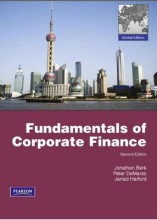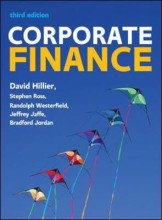Article: Visual tools for business model innovation
15 important questions on Article: Visual tools for business model innovation
What are the 2 main schools of thought with regards to the nature of business models?
2. Business models are cognitively constructed representations that exist in the heads of managers
What are the main 2 views within the "business models are real" school?
2. Business models emerge and change in an evolutionary manner
What are the 3 phases of business model innovation?
2.
3.
(4. Implementation)
- Higher grades + faster learning
- Never study anything twice
- 100% sure, 100% understanding
What are the key barriers in the 3 BMI stages?
Ideation: overcoming dominant business logic
Integration: aligning everything and sharing knowledge across intra- and inter-organisational boundaries
What cognitive abilities can be used to overcome the barriers in the 3 BMI phases?
Ideation: take distance from dominant logic
Integration: focus attention on missing info and communicate effectively with others
What are visuals business model representations?
What are the 2 dimensions on which VBMRs are defined?
2. Graphic form - looks at graphic form the VBMR uses
What are the 3 views in the content dimension of VBMRs?
2. Transactional view - boxed objects (mostly actors) connected through arrows. Shows transactions.
3. Causal view - arrows connect textual elements in a causal fashion
In what groups can the graphic forms be categorised?
2. Brainstorming webs (almost only used in practitioners' view, open-ended and used for out-of-the-box thinking)
3. Conceptual maps (has concepts (usually enclosed in circles/boxes, and lines that indicate a link between two concepts. Combination of graphic and webs, predefined but open-ended)
What are the 4 main takeaways from the categorising of the visualisations?
2. Only a few focus on firm's transactions with partner organisations
3. The number of individual components ranges from 4 to more than 20 elements
4. Practice usually takes elements view, and is less strict in use of VBMRs
What are the main differences between the practitioners' and academic view?
2. Practitioners rarely draw on formal notations (e.g. Causal-loop diagrams)
3. Practitioners use wider boundaries, including elements from the operational or strategy layer too (despite BM being seen as the intermediate layer between these 2)
What are the characteristics of conceptual maps?
2. Support analytical thinking
3. Mainly used in initiation phase
4. Uses boxes and bubbles, and connectors and arrows to link
5. Complementary content in causal or transactional view
What are the characteristics of brainstorming webs?
2. Fosters creativity
3. Mainly used in ideation phase (possible support for initiation)
4. Uses central topic bubble and others descending hierarchically and branches
5. Complementary content in elements view
What are the main characteristics of graphic organisers?
2. Provide structure and focus attention
3. Mainly used in integration phase (possible support for initiation)
4. Uses labeled boxes/other graphic forms with description forms that need to be filled out
5. Complementary content mainly in the elements view
What are the main findings about graphic forms of VBMRs?
2. Few VBMRs fall in brainstorming category
3. How conceptual mapping is used, varies widely
The question on the page originate from the summary of the following study material:
- A unique study and practice tool
- Never study anything twice again
- Get the grades you hope for
- 100% sure, 100% understanding






























